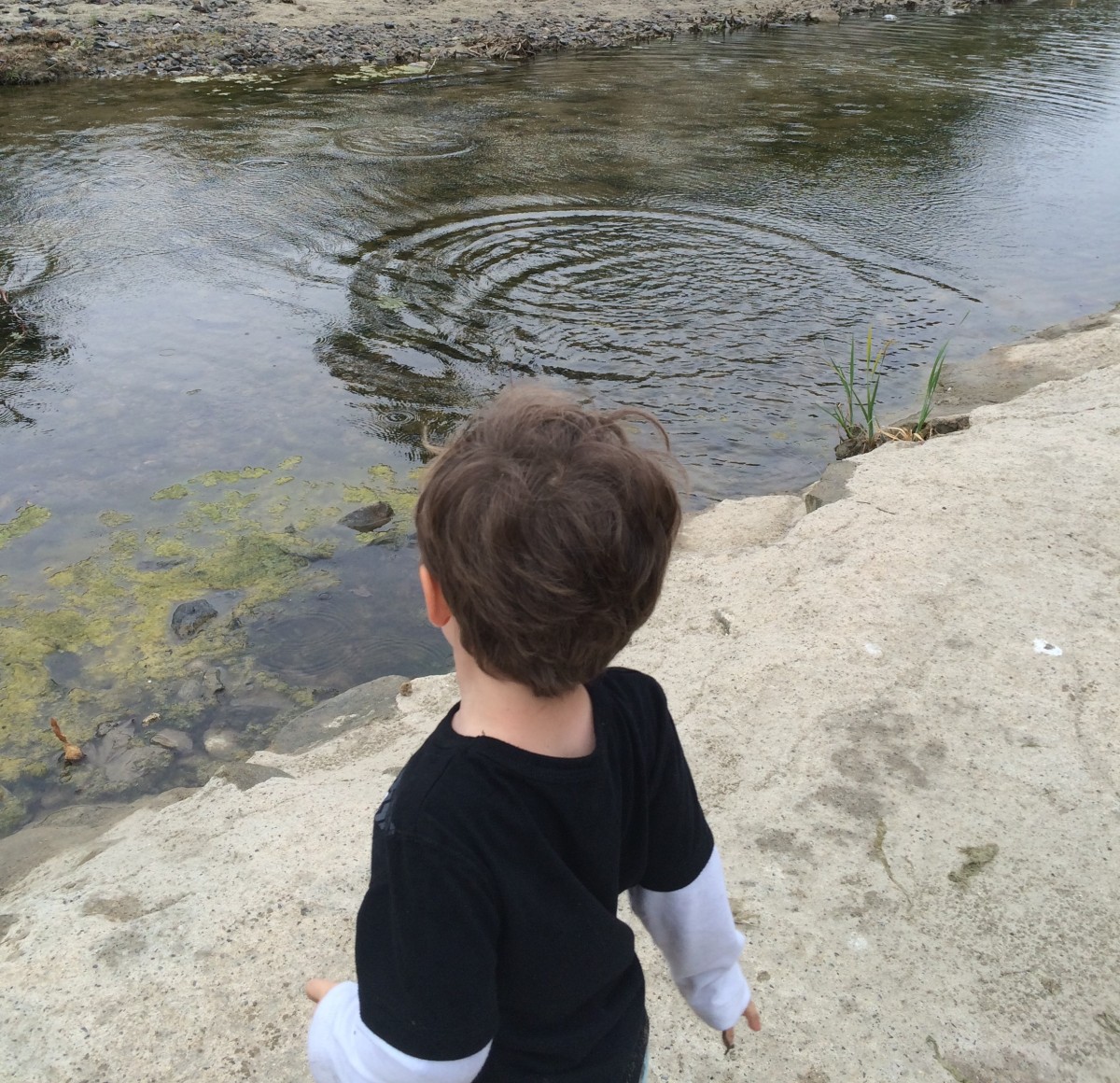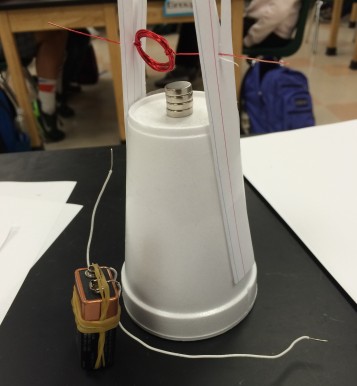[The start of this school year has meant a move to the Next Generation Science Standards, a move that I, as a science teacher, heartily embrace. As the curriculum changes this blog is changing as well and I am moving to focus on blogging about how I incorporate these new standards and lessons into my classroom. Before I go further I should mention that what I am doing heavily incorporates the work that all of us science teachers, and especially Cari Williams, at Tustin Unified School District put in last spring and this summer, as well as work that continues today. This is available online at http://msngss.weebly.com/. Each week I am going to blog about what I am doing and will revise that blog with reflection and revision after the week is over.]
The first NGSS Unit in 8th Grade Science is about how objects move and collide and as an overarching topic looks at asteroids. It is a fun unit as the connections between Earth Science, Life Science, Space, and Physics flow easily.
Before the unit itself I incorporated two activities. The first was a pre-assessment. This pre-assessment, while it could be used for grouping students, was primarily designed to determine which topics my students overwhelmingly knew or didn’t know going in to the unit. Since, the first performance task for this unit was a student guided research paper I assessed only about topics that will come up in later weeks and will discuss the impact of the assessment at that point.
The second introduction activity was an article on Actively Learn. (Our district moved to this literacy tool this year, as someone that used NewsELA extensively in the past and was well used to it, I was a bit frustrated to have to learn a new tool. Now that I’ve used it I take it back. It took only one article for me to be a huge fan.) The articles I used were from an amazing site called Understanding Science and an article in particular about Walter Alvarez’s work in understanding the extinction of the dinosaurs. Since Actively Learn works best uploading Doc files I converted them to upload with questions.
This first performance task, as mentioned before, is a student guided research paper on any topic about the fossil record, asteroids, or extinctions. This assessment (as are all) is broken down into 4 parts, each of which the students will need to master to move onto the next. This means that in the classroom there will be students a different points in the project. My main aim these year is working on how to manage this effectively and support all student needs.
This performance task introduces DCI LS4.A: Evidence of Common Ancestry and Diversity (this DCI will also be addressed in the third unit of this year which focuses on evolution), SEPs on Analyzing and Interpreting Data and Scientific Knowledge is Based on Empirical Evidence, and lastly CCCs on Patterns and Order and Consistency in Natural Systems.)
Below is what I envision this week looking like, I will go back and revise this with reflection when the week is done. (Many performance tasks may have additional, non-assessment, lessons built in. With the structure of this assessment no additional lessons were necessary this week.)
Monday: The aim today is two fold, introduce the topic and introduce the assessment and the structure of these NGSS performance tasks (since it is our first one of the year).
First the students will look at this phenomena about Jupiter. As a table group they students will discuss, what the model shows them (what patterns they see), what they think asteroids and comets are, and what they think would happen if Jupiter wasn’t there.
Then the students will be given a digital copy of the assessment instructions. The students will read through the document and highlight/underline what is expected for each part of the task. And then explain to their partner what they need to do in each part.
Lastly I will explain the general expectations for these assessments (i.e., mastery is needed to move on, how the tracking and monitoring sheet will work,…).
Tuesday: Today the aim is to work on student questions using the Question Formulation Technique. There will be an essential question posted, “How have asteroid collisions influenced the evolution of life on Earth and Earth’s history? How might a modern day impact have an effect on life on Earth?“
First, the students will look at the facts on the QFT slideshow and start to ask questions as a group either about those facts or the topic in general. To facilitate collecting these questions I will use a class Google Sheets document. Each group will be adding questions to the same document, but on a different page.
Once they have written down all the questions they can think of their group will work on classifying the questions as open or closed (after a brief discussion of each type) and work on rewriting one open and one close question.
Lastly the students will work on picking a couple questions to focus on for their research topic. (I will approve the questions to make sure they are satisfactory and that there is enough variety in the class).
Note: I have some students with a modified curriculum, for these students we will work as a small group to come up with a group question.
Wednesday: The students will begin working on part 1 of the assessment, the Defining Key Terms worksheet. At this point the whole class will still be at the same point in the performance task. (As they are working I will use this time to both support the students and to form a general idea of how each student is progressing with and understanding the content.)
Thursday: The students will continue working on the Key Terms worksheet for most of the class period. At the end of the class period they will complete an initial peer evaluation of the document. I am still determining how this will look, but my thought is a modified rubric where they are looking at how many questions are answered as well as if the answer is detailed enough/seems correct. (These peer evaluations will be turned in to me on Friday and I will use them to help me assess the worksheet.)
Friday: The teacher will go over the worksheet so the students can check their answers. If the peer evaluation suggested they missed answers or didn’t have enough detail this would be a chance to improve their answers (and leave a comment on the rubric discussing how they improved it).
At this point I should already have a rough idea of who was successfully completing this assignment and who wasn’t from my notes while they were working. Those who seemed like they needed support in understanding the background material or students who I know need differentiated instruction on key terms (such as some of my English Language Learners) will work as a small group with me on understanding these ideas. This small group could involve breaking down one of the articles on the worksheet or working on focusing on key terms and picture representations as student need requires.
The rest of the class will begin the next part of the assignment, collecting research. (I will be working on completing my evaluations of the students work on part 1 and will give them an mark of mastered or not at that time. As such it is possible that some students beginning the research may have to return to this worksheet Monday.)














